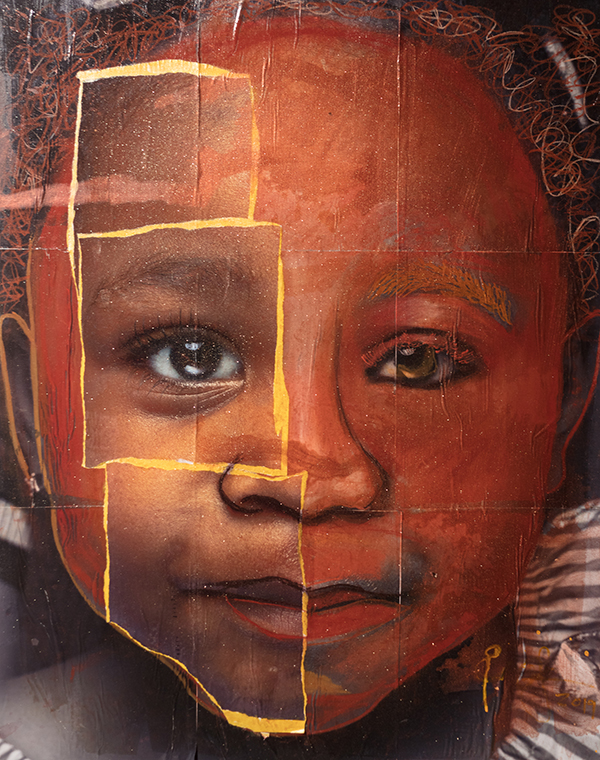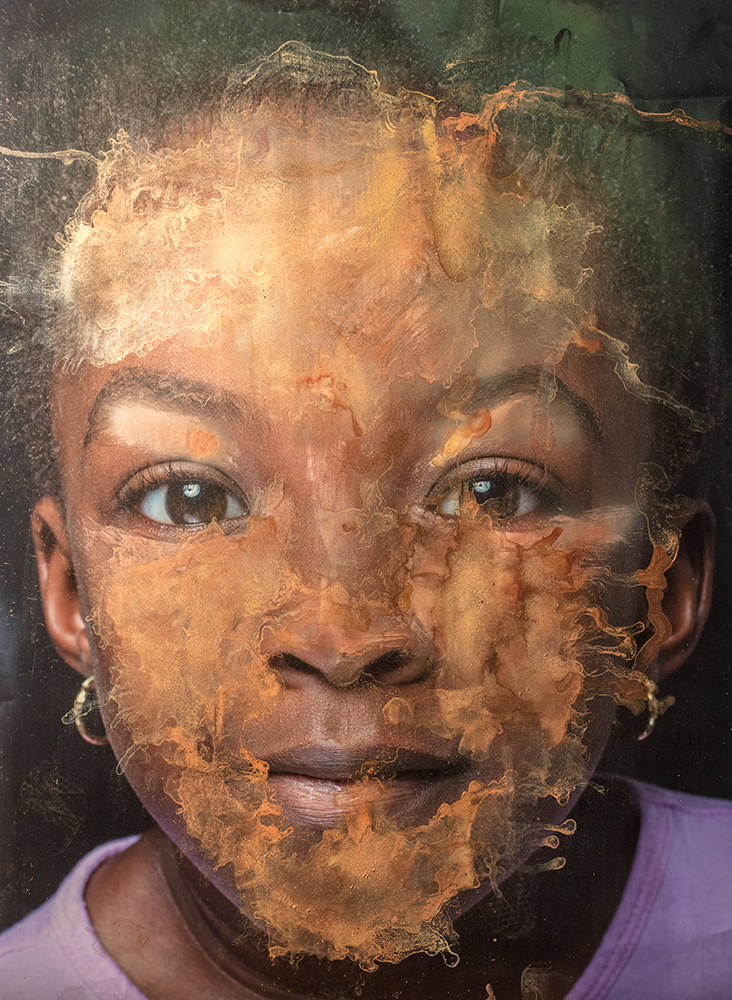Ervin A. Johnson: #InHonor: Monoliths
The Arnika Dawkins Gallery in Atlanta, GA, opened a new exhibition this past weekend of Ervin A. Johnson’s powerful project #InHonor: Monoliths that will run through February 7th, 2020 with an Open House on Oct 26th 11:00AM – 4:00PM. The exhibition is also part of the Atlanta Celebrates Photography programming.
Monoliths is the third iteration of Ervin’s #InHonor projects and starts with the premise that “Blackness is often seen as monolithic, forcing the experiences of many through a bottleneck of racism and systematic oppression until the individual becomes the whole.” Using a photo based mixed media approach to his digitally layered portraits, Ervin forces us to confront the Black experience through his collages that reflect “the physical and mental violence and trauma occurring across America daily”. And yet, he leaves room and consideration for the beauty of Black faces.
Ervin A. Johnson graduated from the University of Illinois- Urbana Champaign with a bachelor’s in Rhetoric and began work on his second bachelor’s at Columbia College Chicago in photography in 2012. He completed his MFA in photography at Savannah College of Art and Design and returned to Chicago. Ervin utilizes photo-based mixed media to reimagine his cultural and racial identity via photography and video. In his most recent body of work, #InHonor, Ervin pays homage to the lives lost to police brutality and racism.
In 2016 he was awarded the Critical Mass Solo Exhibition Award and completed an alumni summer residency with Columbia College followed by the 2016 Diane Dammayer Fellowship, a photographic residency which partners Heartland Alliance and Columbia College’s photography department. The Diane Dammeyer Fellowship in Photographic Arts and Social Issues creates a space for a socially engaged photographer to produce a compelling and dynamic body of work highlighting human rights and social issues. Ervin has exhibited all across the United States, most notably with Blue Sky Gallery in Portland and Arnika Dawkins Gallery in Atlanta and also Detroit’s Wright Museum. He was chosen as of one of the 2017 Critical Mass finalists. Most recently Ervin was selected for the 2019 fifth edition of the Venice biennial art exhibition “PERSONAL STRUCTURES – Identities”. The exhibition will present a wide selection of works from emerging and internationally-renowned artists, photographers, sculptors and projects of academic institutions from all over the world, illustrating the different subjective reflections on the topics of “Time, Space and Existence” and on the concept of Identity. Ervin recently completed an artist residency with The Center for Photography at Woodstock in the Fall of 2019.
#InHonor: Monoliths
Blackness is often seen as monolithic, forcing the experiences of many through a bottleneck of racism and systematic oppression until the individual becomes the whole. #InHonor: Monoliths is a literal take on that notion. Portraits are digitally collaged bringing individuals of different and shared experiences together. Forging new identities and bridging gaps, while creating more distance between others. The portraits are then physically manipulated to mimic the physical and mental violence and trauma occurring across America daily. The sum is an object forged from ritual and meditations on Blackness, just as resilient and beautiful but somehow different.
Technique has evolved since the birth of #InHonor in 2015. Process is still informed by the abstract expressionist movement, in that paint is introduced to the photographic material in a metaphoric way as a stand in for physical and mental abuse done to black bodies. However the focus is not on the destructive nature of racism as a physical manifestation in the work. That is to say, “destruction” occurs more subtly as the work has evolved. Removing pigment and adding back from the photo on the first layer, in a not so accurate way becomes a commentary on the mishandling of the black body and also how because “Blackness” is often times viewed as monolithic. Colors used in the second layer aren’t specific to each individual. By adding the pigment back by hand I care for my brothers and sisters and forge for them a new existence, which is typical of the black experience, making something out of nothing.
Posts on Lenscratch may not be reproduced without the permission of the Lenscratch staff and the photographer.
Recommended
-
Carolina Baldomá: An Elemental PracticeJanuary 5th, 2026
-
Time Travelers: Photographs from the Gayle Greenhill Collection at MOMADecember 28th, 2025
-
Suzette Dushi: Presences UnseenDecember 27th, 2025
-
Ragne Kristine Sigmond: Portraits of Painterly LightDecember 2nd, 2025








































































